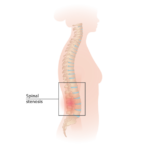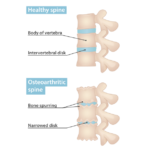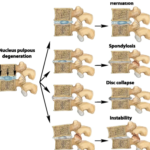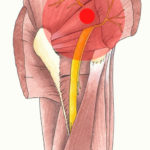More Info About Sciatica and Piriformis Syndrome
Our recent post about sciatica was a primer on what the sciatic nerve is and where it goes.
Here is some more information about sciatica and piriformis syndrome that might help in understanding the nature of sciatic pain.
There are numerous possible causes for this particular kind of pain.
In the case of something pressing on the sciatic nerve, most often it is a slipped or herniated disc.
We’re talking about the discs that live in between the vertebrae of the spine, often referred to as intervertebral discs.
These discs slip and degenerate for all different reasons.
First of all, genetics and imitation play a role. So a family can truly have a bad back issue through many generations where the integrity of the spine is compromised.
Discs also become damaged because of trauma. There’s the trauma of an acute injury, like a car accident.
There’s also extended emotional trauma. Our bodies remember everything, and we store tension in our muscles.
A history of emotional trauma is going to affect the physical structure of the body. Our posture can contribute to poor bone alignment and poor muscle tone, both of which can lead to slipped discs. Finally, diet and nutrition also a play a role in the development of our bodies, and health of the spine.



Certain conditions can lead to spine degeneration that may result in bone pressing onto the spinal column or the root of the sciatic nerve.
Also, the nerves at the base of the spine are vulnerable. The spinal cord stops growing in infancy, but the bones of the spine and the rest of the body continue to grow.
So the spinal cord ends near the top of the lumbar spine and a bunch of exposed nerve roots continue the journey towards the lower extremities. It is very easy for something to irritate one of these nerves.
 In the case of piriformis syndrome, there is a muscle pressing on the sciatic nerve.
In the case of piriformis syndrome, there is a muscle pressing on the sciatic nerve.
The piriformis muscle crosses over the sciatic nerve. So if the piriformis muscle goes into spasm, then it will press on the sciatic nerve and create the same radiating pain that you’d get from a bone or disc pressing on the sciatic nerve.
Muscles spasm for similar reasons – genetics, physical and emotional trauma, poor posture, diet, and nutrition. You can’t have too much information about sciatica and piriformis syndrome. It is simply important to understand what is causing your sciatic pain.
In all of these situations, whether it is muscle or bone or disc pressing on the sciatic nerve, the key to healing is to change your walking and standing habits.
Those with chronic pain have an immediate incentive to seek solutions in changing the way they move. Others may have pain every so often, but they too should change the way they walk and stand to prevent the situation from continuing or growing worse.
Perhaps you always seem to get injured in the same place or on the same side.
Maybe you’ve been to physical therapy that has been effective only for the injury to recur again at a later date.
Those who have had surgery should definitely examine their habits to create new, healthy patterns.
Or perhaps you are not in pain but recognize these postural issues in yourself and know people with sciatica. For all of us, it is vital to our health and healing that we consider the nature of the ways in which we move, get injured, and recover. How you live, move, and care for yourself will determine the quality of your life.
We believe that knowledge is the key to healing. How much information you have about sciatica and piriformis syndrome can affect how quickly you heal.


 In the case of piriformis syndrome, there is a muscle pressing on the sciatic nerve.
In the case of piriformis syndrome, there is a muscle pressing on the sciatic nerve.